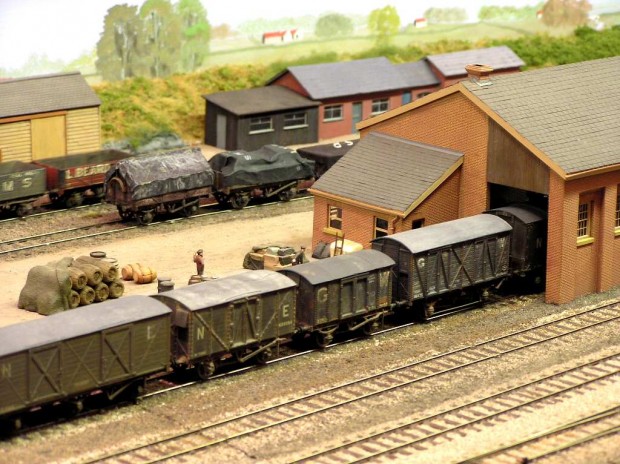Crafting model trains is the pastime of choice for lots of people the world over. This is because those who enjoy doing this are not only able to accumulate their own collections of train sets, tracks and other related things, bu also get to discover quite a bit more about trains and the pastime by doing this.
When you discuss model trains, you first need to know that there are  three basic elements to trains. First off is the scale. It describes the ratio of the size of the model to the real train model it is imitated. You can find model trains in these different sizes to fit all requirements and reasons to consider such as area requirements and budgets. There are four standard scales, particularly G, O, HO, and N, all which differ in regards to the ratio mentioned above. G-scale trains, which have ratios of 1:22 and O-scale trains, which have ratios of 1:48, are considered large trains. By contrast, HO-scale trains and ho train layouts have ratios of 1:87 and N-scale trains have ratios of 1:160, making them quite a bit smaller than the large trains. There are several other ratios; less popular ones, which are smaller than the HO and N ratios; these are the S ratio (with a scale of 1:64), the TT scale (with a scale of 1:120), and the Z scale (with a scale of 1:220).
three basic elements to trains. First off is the scale. It describes the ratio of the size of the model to the real train model it is imitated. You can find model trains in these different sizes to fit all requirements and reasons to consider such as area requirements and budgets. There are four standard scales, particularly G, O, HO, and N, all which differ in regards to the ratio mentioned above. G-scale trains, which have ratios of 1:22 and O-scale trains, which have ratios of 1:48, are considered large trains. By contrast, HO-scale trains and ho train layouts have ratios of 1:87 and N-scale trains have ratios of 1:160, making them quite a bit smaller than the large trains. There are several other ratios; less popular ones, which are smaller than the HO and N ratios; these are the S ratio (with a scale of 1:64), the TT scale (with a scale of 1:120), and the Z scale (with a scale of 1:220).
The second of the fundamental elements associating with these kinds of models is the gauge. It is defined as the standard size of the track between the two parallel rails used by model trains. There are two fundamental versions. The first is the basic gauge, in which the distance in between the two rails measures four feet and 8 and a half inches. The 2nd is the narrow gauge, which can determine anywhere from 3 feet to 3 and a half feet in between the two parallel rails.
 The 3rd and last of these fundamental aspects is the surroundings. Some enthusiasts might select nothing more than the existing background of whatever location or room their model train sets and tracks are located. Others, might choose to go for it and craft actual model landscapes with features consisting of model hills, valleys, mountains, rock formations, people, and even streams, rivers or waterfalls. They might even choose to copy an actual train path if they so desire. Of prime factor to consider is that the train set need to not be hindered by these enhancements; the train should have the ability to continue to run in a loop. The shape of the track can be a standard oval or double oval, a figure eight shape anything that the lover can desire, as long as the train can operate on it unblocked and not in danger of derailment due to the shape or any function of the landscapes.
The 3rd and last of these fundamental aspects is the surroundings. Some enthusiasts might select nothing more than the existing background of whatever location or room their model train sets and tracks are located. Others, might choose to go for it and craft actual model landscapes with features consisting of model hills, valleys, mountains, rock formations, people, and even streams, rivers or waterfalls. They might even choose to copy an actual train path if they so desire. Of prime factor to consider is that the train set need to not be hindered by these enhancements; the train should have the ability to continue to run in a loop. The shape of the track can be a standard oval or double oval, a figure eight shape anything that the lover can desire, as long as the train can operate on it unblocked and not in danger of derailment due to the shape or any function of the landscapes.
